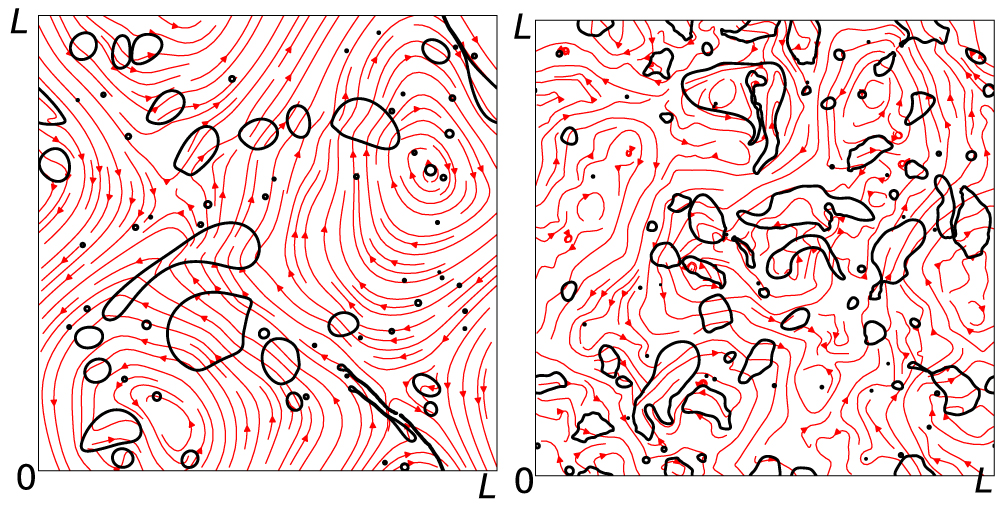EPJ E Highlight - Characterising complex flows in 2D bubble swarms
- Details
- Published on 30 November 2020

In 2D simulations, the flows surrounding rising swarms of bubbles display characteristically different behaviours to those observed in 3D models
When swarms of bubbles are driven upwards through a fluid by their buoyancy, they can generate complex flow patterns in their wake. Named ‘pseudo-turbulence,’ these patterns are characterised by a universal mathematical relationship between the energy of flows of different sizes, and the frequency of their occurrence. This relationship has now been widely observed through 3D simulations, but it is less clear whether it would still hold for 2D swarms of bubbles. Through research published in EPJ E, Rashmi Ramadugu and colleagues at the TIFR Centre for Interdisciplinary Sciences in Hyderabad, India, show that in 2D simulated fluids, this pattern changes within larger-scale flows in less viscous fluids.
The team’s discoveries address a key oversight in fluid dynamics simulations, and could enable researchers in areas from oceanography to acoustics to improve their predictions. In the past, many studies of pseudo-turbulence have found the statistical properties of 3D bubble swarms remain universal over a wide range of bubble surface tensions, fluid viscosities, and density ratios between bubbles and fluids. In 2D fluids, however, an effect named an ‘inverse energy cascade’ enables energy to be transferred from small- to large-scale flows. In their study, Ramadugu’s team aimed to investigate the implications of this mechanism for the first time.
The researchers achieved their results through a simulation approach which fully accounts for turbulent flows on all scales in space and time, removing the need for them to approximate any unpredictable behaviours. They found that while the usual pseudo-turbulence relationship holds on larger scales within more viscous fluids; and on smaller scales in less viscous fluids, different behaviours can be found in larger-scale flows within more viscous fluids. Here, Ramadugu and colleagues discovered that an inverse energy cascade occurs in the wake of the bubble swarm; as well as a different mathematical relationship between flow energy and frequency than any observed previously.
R Ramadugu, V Pandey, P Perlekar (2020), Pseudo-turbulence in two-dimensional buoyancy driven bubbly flows: A DNS study, Eur. Phys. J. E 43:73. https://doi.org/10.1140/epje/i2020-11997-0




